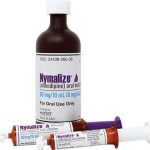
Contents
Sacroiliac (SI) Joint Pain
There are many terms for sacroiliac joint problems, including SI joint dysfunction, sacroiliac joint disease, SI joint syndrome, SI joint strain, and SI joint inflammation.
- These terms describe conditions that cause pain in the SI joints.
Causes of sacroiliac joint pain
Like other joints, the SI joints have a cartilage layer that allows for movement and acts as a shock absorber. When this cartilage is damaged, the bones rub together and degenerative arthritis (osteoarthritis) occurs. This is the most common cause of SI joint dysfunction. Degenerative arthritis commonly affects the SI joints and other weight-bearing joints.
Pregnancy is another common cause of SI joint dysfunction. Hormones released during pregnancy relax ligaments, increasing motion in the joints and placing additional stress on the SI joints due to weight gain and altered gait.
Any condition that affects the normal walking pattern can stress the SI joints. This includes leg length discrepancy, as well as hip, knee, ankle, or foot pain. Treating the underlying problem often improves associated lumbar spine or SI joint dysfunction.
Various joint disorders can cause inflammation in the SI joints, such as gout, rheumatoid arthritis, psoriatic arthritis, reactive arthritis, and ankylosing spondylitis.
Symptoms of sacroiliac joint pain
The most common symptom of SI joint dysfunction is pain in the lower back, hips, groin, and thighs. The exact source of the pain can be difficult to determine. Pain worsens with standing and walking and improves when lying down. Inflammation and arthritis in the SI joint can cause stiffness and a burning sensation in the pelvis.
Diagnosis of sacroiliac joint pain
Several types of doctors may treat SI joint pain. Rheumatologists specialize in treating SI joint pain caused by various forms of arthritis. Obstetricians treat SI joint pain during pregnancy. Other doctors and pain-management specialists can also treat SI joint dysfunction.
Diagnosis begins with a thorough history and physical examination. Certain signs and tests can help isolate the source of the pain.
X-rays, CT scans, and MRIs can aid in diagnosis by providing detailed images of the joint and surrounding tissues. Bone scans help identify areas of increased activity. Injections can numb the area, helping identify the pain source.
Treatment of sacroiliac joint pain
Injections into the SI joint provide both diagnosis and treatment. Oral anti-inflammatory medications are often effective for pain relief. Physical therapy, including specific exercises and stabilizing devices, can help reduce pain. Surgery may be an option if other treatments fail.
Home remedies include taking oral anti-inflammatory medications, rest and ice for mechanical causes, and gentle exercise and heat for inflammatory causes.
Prognosis of sacroiliac joint pain
The prognosis varies depending on the cause of the dysfunction. Pregnancy-related SI joint pain usually improves after childbirth. Chronic conditions like ankylosing spondylitis and psoriatic arthritis can be managed with effective treatments. Degenerative arthritis is a chronic condition but can be effectively managed to improve symptoms.
Prevention of sacroiliac joint pain
SI joint dysfunction is not preventable in some cases, but healthy weight and conditioning can reduce the chances of developing it. By reducing joint loads, cartilage damage and arthritis can be minimized.


